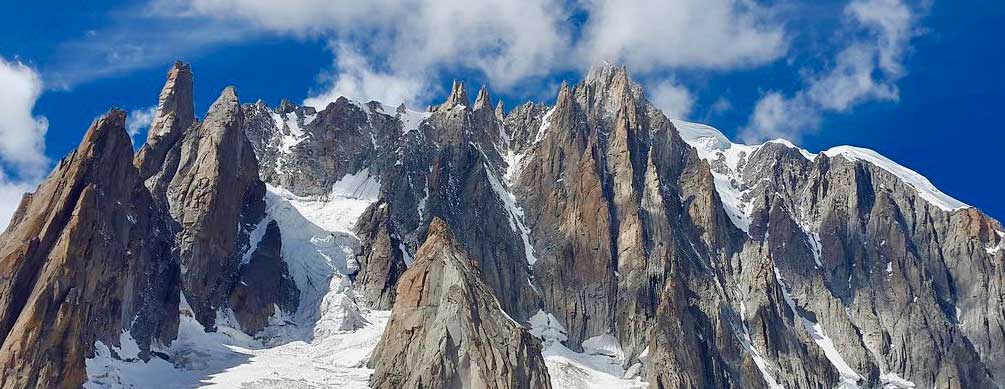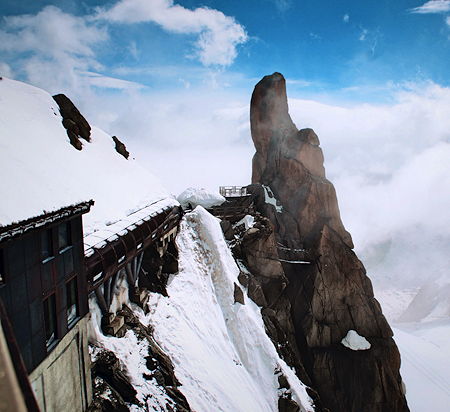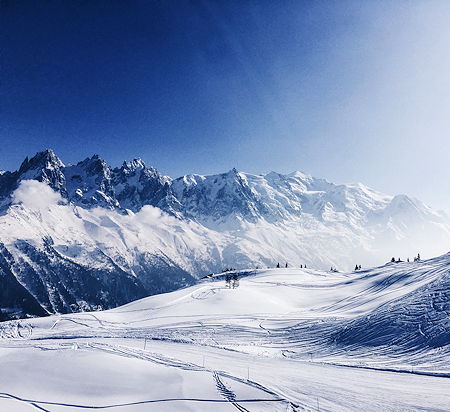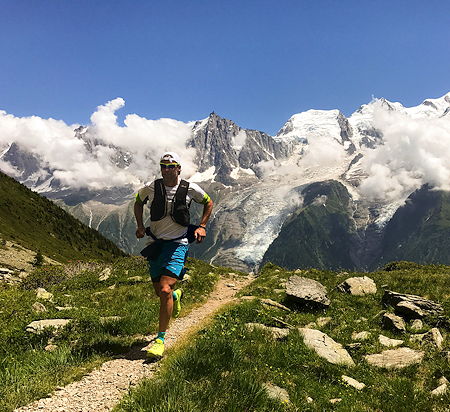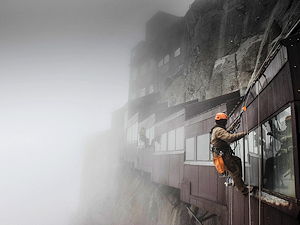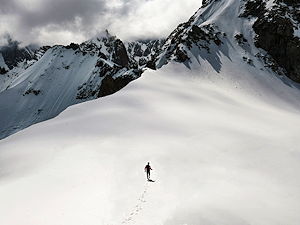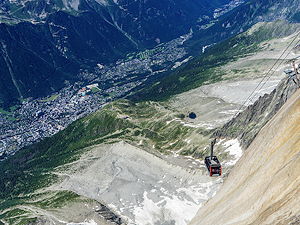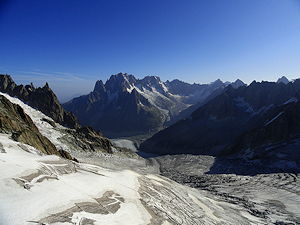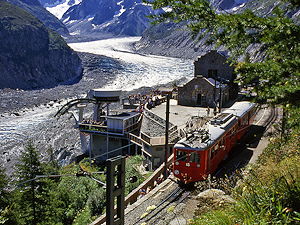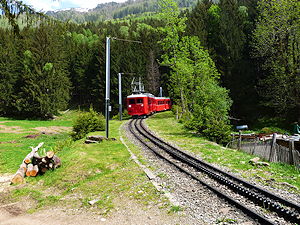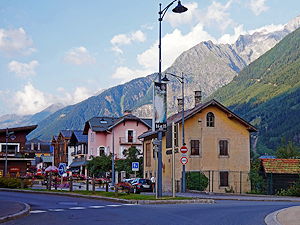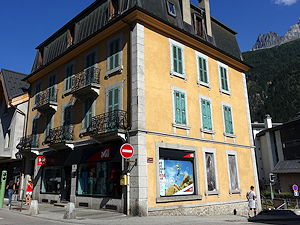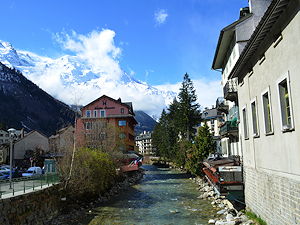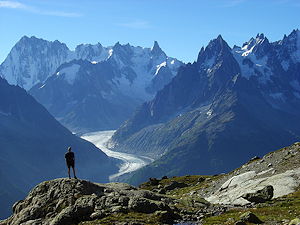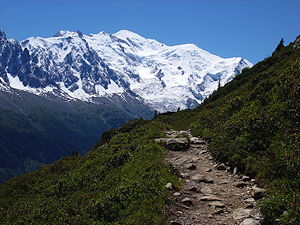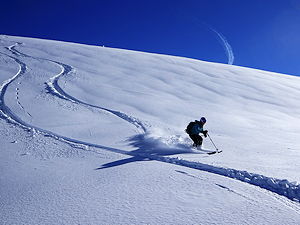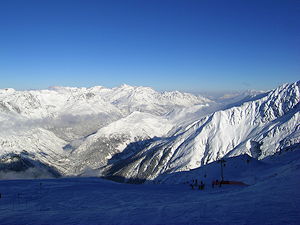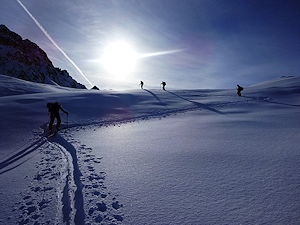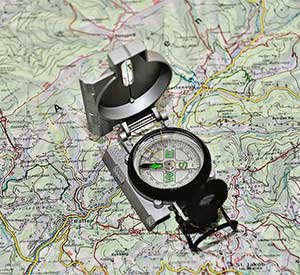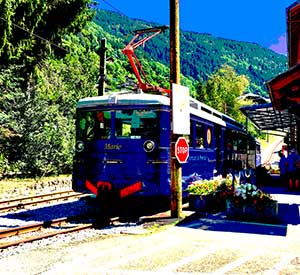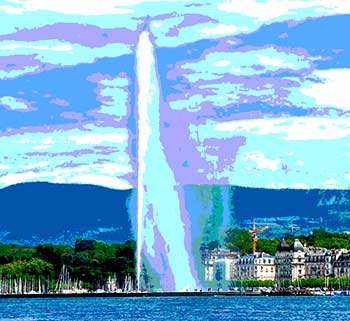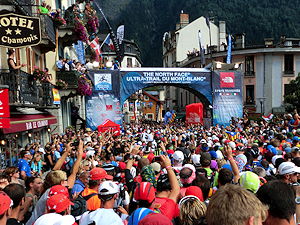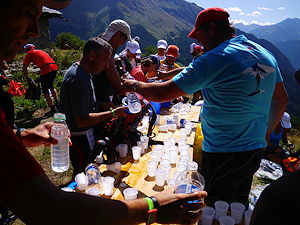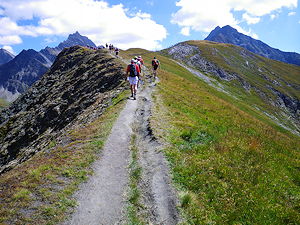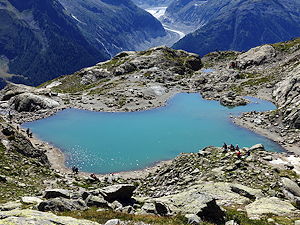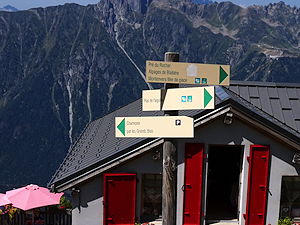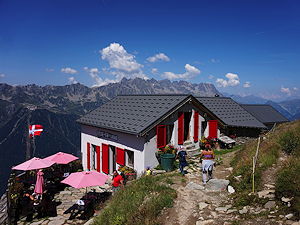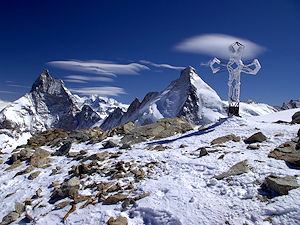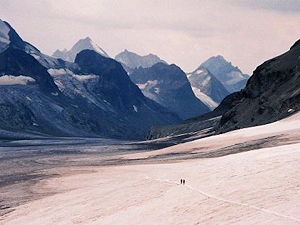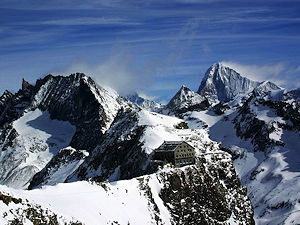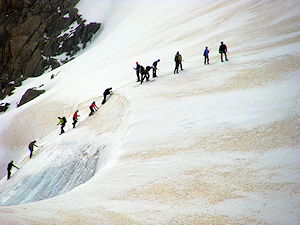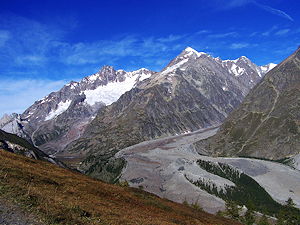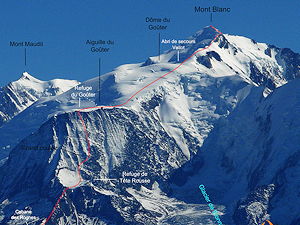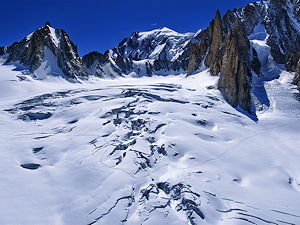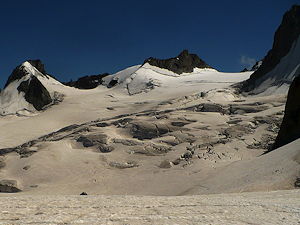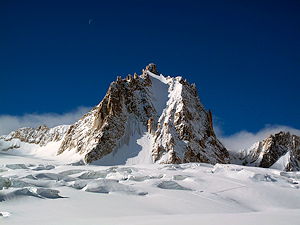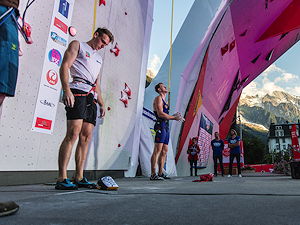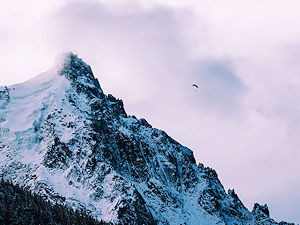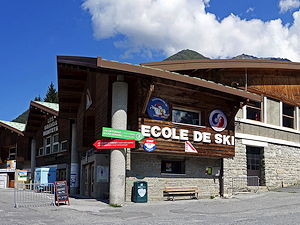Things to do in Chamonix, France
Chamonix, home of Mont Blanc (the highest peak in western Europe), is the most famous and popular resort in the Alps.
Found in the south-east of France, and usually accessed by a one-hour drive from Geneva airport, Chamonix is a mountain mecca. Thousands travel here to attempt to scale its most popular attraction, Mont Blanc. The view from the summit of this 4810 metre alpine giant, and indeed from the top of the 3,842 metre Teleferique l'Aiguille Du Midi cablecar, is spectacular.
Another great Chamonix place to visit is Montenvers, accessed via a 20 minute cog railway journey. From here you can see the 7-kilometre Mer de Glace glacier, the third largest in the Alps, and the stunning Le Dru (one of the world's most beautiful peaks).
Chamonix also offers wonderful day or circuit walking: for instance, the walk to the postcard-perfect Lac Blanc or the 11-day Tour du Mont Blanc. Chamonix's skiing is popular for advanced skiers in particular. And Chamonix is a magnet for climbers and mountaineers, with seventeen 4000-metre peaks in the Mont Blanc massif. This is the great outdoors at its best.
Chamonix's other attractions and things to do include paragliding, golf, swimming, indoor climbing, cycling and attending a range of other festivals, markets and other events held throughout the year. Another option is to soak up the cafes, restaurants and buzz of the pedestrianised Chamonix town centre.
Chamonix is also a great base for nearby attractions such as St Gervais-les-Bain (20 mins drive), Geneva (65 minutes), Zermatt (135 mins) and Grindelwald (3 hours).
Last updated: December 2019
1. Mont Blanc and the Aiguille du Midi
Chamonix's biggest draw is the highest peak in western Europe, the 4810 metre Mont Blanc (Monte Bianco in Italian, both names meaning the 'White Mountain').
Mont Blanc is, in fact, just one of seventeen 4000-metre peaks in the Mont Blanc Massif, a mountain range in the Graian Alps.
The Massif's other famous summits include Mont Maudit (4465 metres, meaning Cursed Mountain), the 4208 metre Grandes Jorasses (which boasts one of the six great north faces of the Alps), and the Aiguille Verte (4122 metres, meaning Green Needle).
Climbing Mont Blanc
First climbed in 1786 by Michel-Gabriel Paccard and Jacques Balmat, Mont Blanc is these days conquered by around 20,000 each year.
The most popular routes leave from the Gouter Hut (3835 metres, reached by a 4-6 hour walk from the Nid d'Aigle tramway terminus) and Cosmic Hut (Refuge Cosmique, 3613 metres, 30 minutes from the Aiguille du Midi cablecar station).
Ascents from both huts require a 2am start to climb the 1000/1200 vertical metres to the summit. Though not difficult, the routes (graded PD/PD+) can be dangerous on account of the altitude, rock fall and avalanche and crevasse risks. Inexperienced mountaineers must therefore hire a Chamonix mountain guide.
l'Aiguille Du Midi Cable Car
For those with less energy, you can get close to Mont Blanc by taking a trip on the Teleferique l'Aiguille Du Midi (meaning Needle of the Noon cablecar). MAP
Leaving from south Chamonix, at an altitude of 1035 metres, and ascending over the course of 20 minutes to 3842 meters, the L'Aiguille Du Midi was the world's highest cable car for 20 years after its construction in 1955. The altitude gain of 2,800 is still remarkable, and will probably leave you feeling short of breath.
There is plenty to do at the top, with stupendous views of the French, Italian and Swiss Alps, a gift shop and cafe.
The Aiguille du Midi also marks the beginning of the 17 kilometre Vallee Blanche glacier ski run, and the start of the bubble cablecar over the Glacier du Geant to Pointe Helbronner (3462 metres), on the Italian side of the Mont Blanc massif and offering a great panorama of 4000 metre peaks.
Mont Blanc is Chamonix's premier attraction.
£$€¥ Adults: €89 for a return ticket to the Aguille du Midi; Children/Concessions: €75; Family ticket: €186. (Dec 2019)
2. Montenvers Mer de Glace
Montenvers (1913 metres) is a pretty alpine village about 4 kilometres from central Chamonix.
It was popularized in the 18th century by British explorers William Windham and Richard Pocock, and is reached by 20-minute train ride on the Montenvers railway (the Chemin de Fer du Montenvers) - an enjoyable journey through pine forest and offering great views of the Chamonix valley and Aiguilles Rouges, Le Dru, La Verte and the more distant Grandes Jorasses.
Mer de Glace
The main attraction here is the Mer de Glace, a seven-kilometre glacier with a width of between 700 and 1950 metres and a depth of up to 420 metres. It is the third largest glacier in the Alps, after Grindelwald's Aletsch glacier and Zermatt's Gorner Glacier.
Ice Cave and other attractions
There are lots of other things to do (see on map). They include:
- the Mer de Glace ice cave - reached by cablecar down to the glacier followed by a metal stairway with 400 steps - displaying exhibits showing how mountain folk lived in the 19th century;
- the Hotel de Montenvers, with a great restaurant with a roof terrace offering superb views of the Aiguille du Dru (3733 metres); and
- a gallery of rock crystals;
- the Temple of Nature, constructed in the 18th century to offer protection to those visiting the glacier, these days converted into a theatre showing historical films; and
- the Glacorium, an exhibition space devoted to the understanding of glaciers.
Walking from Montenvers
The most popular walk from Montenvers is the two-hour round trip to Signal Forbes (2198 metres), a spectacular viewpoint, involving 300 metres of ascent. Head under the railway track and turn left (and uphill) at the Hotel de Montenvers.
Other walks from Montenvers include the traverse to the Plan de l'Aiguille (the intermediate station on the Aiguile du Midi cablecar, 2130 metres, with a pleasant mountain hut), a 3-hour walk that involves 500 metres of ascent. This is often described as one of the best Alpine walks, offering views of the glacier, the Aiguille du Dru, Mont Blanc and the Chamonix valley. Another, less strenuous, option is the two-hour forest walk back down to Chamonix. MAP
£$€¥ Adults: €34.50 for a return ticket to Montenvers; Children/Concessions: €28.50. (Dec 2019).
3. Chamonix Town Centre
Chamonix's Main Street, Rue du Docteur Paccard, is pedestrianised. It runs for over 500 metres and has a multitude of interesting shops and attractions.
Towards the centre are found the main squares and statues of grandees of Chamonix history, including H B de Saussure (who in 1760 offered a prize for the first ascent of Mont Blanc, claimed by Dr Michel Paccard and Jacques Balmat after their successful 1786 attempt).
Outdoor shops
As you would expect in such a central mountain town (see on map), there are scores of outdoor shops, with brands including Arcteryx, Oxbow, Salomon, Helly Hanson, Ripcurl, Patagonia, the North Face, Mammut, and Columbia.
Food and drink
For those looking for refreshment, ChaChaCha, at the west end of the street, is a high-class wine and spirits merchant, offering €15 wine tastings. La Spiga d'Oro offers Italian specialities ranging from balsamic onions to fresh pasta and Parma ham.
The street is also home to numerous restaurants and cafes, including Atmosphere (on the river, offering excellent set menus from €25), Cap Horn (a trendy joint with great traditional cooking as well as Japanese fare) and Munchie (serving French and European food with Asian twist, such as Duck teriyaki and Japanese style beef tartar).
Clothes shops
For clothing, why not visit 'Oh ... My dressing', which offers vintage fashion, Eric Bompard (cashmere), Blue-Ink (high end ladies fashion) and Lacoste and Chanel (which need no introduction).
4. Walking: Tour du Mont Blanc
The Tour du Mont Blanc (or TMB) is the most popular long-distance walk in Europe.
Traditionally starting in Chamonix, the TMB is 168 kilometres long, with about 10 kilometres of vertical ascent and typically takes 7-11 days to complete (with about 55 hours of walking time).
Three countries
It passes through three countries and seven valleys in its circumnavigation of the Mont Blanc Massif (see on map).
Thus, the French Les Contamines and Les Chapieux are reached after 31 and 49 kilometres respectively; the walk then enters Italy, and reaches Courmayeur after 77 kilometres; Switzerland is next, with Champex-Lac being reached after 122 kilometres; trekkers then return to Chamonix, by which stage they will have completed a distance equivalent to running four marathons.
... and lots of mountains
The route circumvents not only Mont Blanc but also the Grandes Jorasses (4208 metres), Dent du Geant (4013 metres) and the Aiguille Verte (4122 metres).
The highest point is Grand Col Forret (2537 metres) and the lowest valley is Saint Gervais (810 metres), with the route including nine significant mountain climbs. Most people stay at the alpine huts or hotels found en route, whilst some prefer to wild camp.
5. Skiing in Chamonix
Chamonix offers four principal ski areas - Brevant/Flegere, The Grands Montets, Les Houches and Le Domaine de Balme - and routes of all difficulties at altitudes of between 950 and 3300 metres.
Chamonix is best known as a resort for advanced and off-piste skiers and snowboarders, with great quality snow in the early and late season, stunning scenery, and some of the best apres-ski.
On the downside, the ski areas are spread along the 20 kilometres of valley floor, requiring visitors to make extensive use of the sometimes inefficient and outdated lift infrastructure, and much of the terrain is unsuitable for beginners.
Brevant/Flegere
Brevent/Flegere, with an altitude of between 1030-2525 metres, is the only area directly accessible from Chamonix town centre, with the gondola to Brevant being one of the valley's few modern lifts.
From the top, there is a lift linking to Flegere (the lift directly to Flegere from the village of Les Praz does not get a good press). The combined Brevent/Flegere area offers 56 kilometres of pistes, with 32 runs including 7 very tricky black and 13 blue runs.
Grands Montets
The Grands Montets is the highest and most challenging area, found between 1235-3300 metres and covering the Argentiere glacier and the slopes of Lognan and the Pendant.
The area is accessed by cablecar or chairlift from Argentiere, though many complain of the queues. There are 28 kilometres of pistes in all, including 6 black runs - such as the famous and very steep Point de Vue and Pylones routes - and 4 red runs.
Les Houches
Les Houches is situated between 950 and 1900 metres (see on map), making it the lowest area, with 55 kilometres of pistes including 12 red and 2 black runs. There are superb views of the Mont Blanc massif from the top of the lift, with 120 snow cannons keeping the pistes open until late season.
Le Domaine de Balme
Le Domaine de Balme, at between 1453-2270 metres, is the second lowest area. And there are sometimes queues on the cablecar, with the train to Vallorcine being a viable alternative.
But the 29 kilometres of predominantly gentle slopes offer 20 runs, including 11 blue runs, in an area which is usually free from crowds and which offers some beautiful shaded forest routes.
